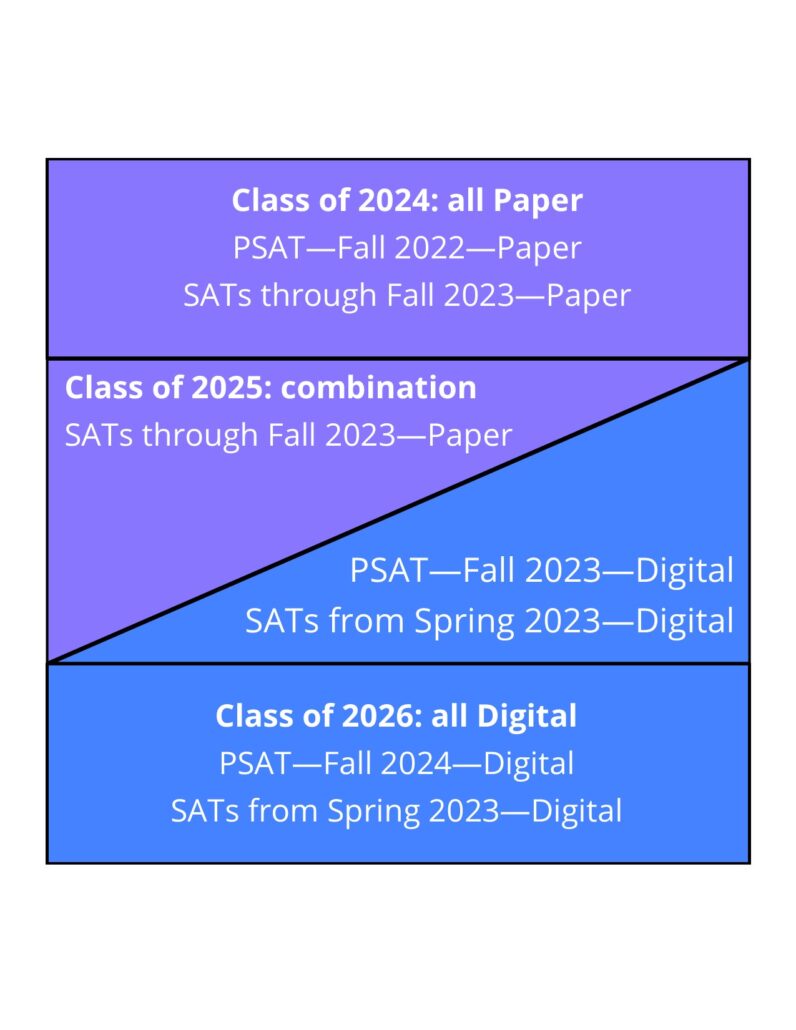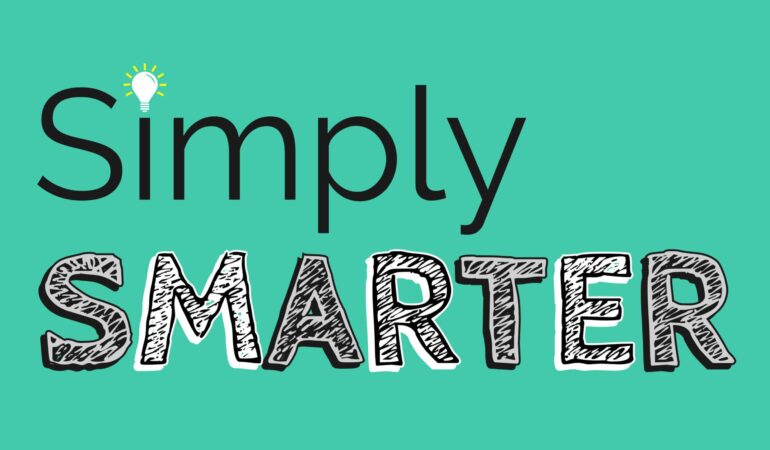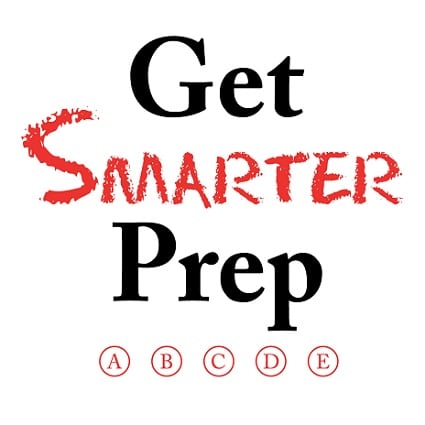Advice for the Upcoming Digital SAT
The SAT is currently in the process of transitioning from its current format to a new digital version. Here are some key facts about the timeline of the change and how it might impact your (or your student’s) prep process.
For more information about the difference between the two tests, please check out this post.
___
You may have heard that the SAT will soon transition to a digital format. Indeed, the transition has already begun. International students taking the SAT this semester (spring 2023) will take the digital version of the test.
For US students, the fall 2023 PSAT will be digital, and the digital version of the SAT will be administered starting in spring 2024.
What does this mean for students?
Class of 2024
For students in the class of 2024, the digital version will likely not be a concern. These students took their PSAT in the fall of 2022. Future SAT administrations in the spring and fall of 2023 will all be using the current (paper) version of the test. This includes all test dates through December 2, 2023. Most students will complete any standardized testing for their college applications during that first semester of senior year.
Class of 2025
Things get a bit more complicated for the class of 2025. These students will be taking the digital PSAT/NMSQT in October of 2023. We generally don’t recommend PSAT prep, as it isn’t a great use of time and resources for the overwhelming majority of students.
However, if we do recommend PSAT prep for a student, we often suggest they take the SAT that is closest to that PSAT date, to make the most of the preparation time they have spent. For the class of 2025, though, the SAT administrations surrounding their PSAT will be quite different. Preparing for the (new) PSAT will not translate directly into preparing for the (old) SAT.
Our recommendations are always tailored to individual students, and we encourage you to reach out to us with questions! But the class of 2025 will be dealing with both versions of the test; the new, digital version will be what they see on the PSAT and in the spring of their junior year, while the old, paper version will be the tests administered during the fall of their junior year. This will make SAT prep for these students more complicated, and might be one of many factors that leads students to consider the ACT instead.
Class of 2026
For the class of 2026, we would not recommend students begin their prep process until the spring of 2024 at the earliest (the end of their sophomore year). By this point, the transition to the digital SAT will be complete.
At this point, the major concern for students interested in the SAT becomes the availability of practice materials. Any time a test is redesigned, a lot of the available material becomes obsolete. For a student who is already near their goal, this is less of a concern, but for a student hoping for a significant improvement, they might work through the available resources quickly and then be left scrambling for practice material. This will be a significant consideration in our recommendations for the class of 2026, and possibly beyond, depending on how much additional material is made available moving forward.

As always, we’re happy to answer any questions you have about these changes and what they mean for you!





